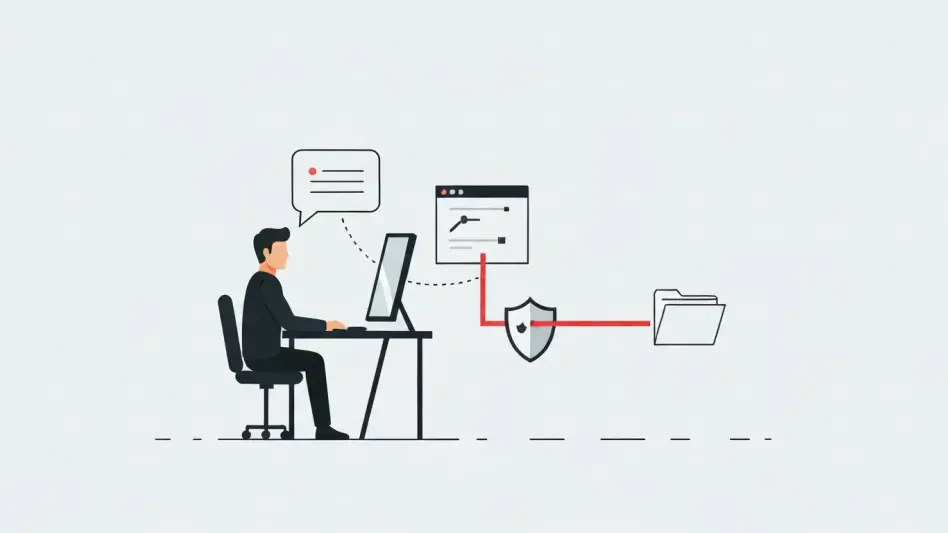In the ever-evolving landscape of cybersecurity, a startling reality has emerged that challenges conventional assumptions about digital threats, as insider breaches have now overtaken external attacks in both frequency and financial impact. Organizations across industries are grappling with the sobering fact that the greatest dangers often lurk within their own walls, stemming from employees, contractors, or trusted partners who either intentionally or accidentally compromise sensitive data. These internal incidents are not just more common but also carry a staggering average cost of $2.7 million per breach, far surpassing the damage inflicted by outside hackers. The reasons behind this disparity are complex, tied to the unique nature of insider access, the difficulty of detection, and the profound operational and reputational fallout that follows. This pressing issue demands a deeper understanding of why internal threats pose such a formidable challenge and what can be done to mitigate their devastating effects.
The Hidden Dangers of Internal Threats
The primary factor driving the high cost of insider breaches lies in the inherent trust placed in employees and partners, which often grants them unrestricted access to critical systems and data. Unlike external attackers who must first penetrate fortified defenses, insiders already operate within the network, bypassing many traditional security barriers. This privileged position allows malicious actors to exploit vulnerabilities over extended periods, often remaining undetected while extracting valuable information or causing widespread damage. A significant portion of these breaches—nearly 45%, according to recent surveys of IT and security professionals—stems from data leakage, whether through deliberate theft or careless mishandling. The financial toll is compounded by the need for extensive forensic investigations and the potential loss of intellectual property, making each incident a multifaceted crisis that disrupts business continuity.
Beyond the immediate monetary impact, insider breaches inflict severe reputational harm that can take years to repair. When sensitive customer data or trade secrets are exposed by someone within the organization, public trust erodes rapidly, often leading to lost business opportunities and regulatory scrutiny. The operational disruptions are equally daunting, as companies must divert resources to contain the breach, notify affected parties, and implement corrective measures. Additionally, the psychological effect on the workforce cannot be overlooked, as remaining employees may feel demoralized or suspicious of tightened security protocols. This unique combination of direct and indirect costs sets insider threats apart from external attacks, where the damage is often more contained and predictable. The internal nature of these incidents amplifies their ripple effects, creating a challenging landscape for organizations to navigate.
Evolving Risks in Modern Work Environments
The shift to remote and hybrid work models has significantly heightened the risk of insider breaches, blurring the lines between personal and professional digital spaces. Employees accessing corporate networks from unsecured home environments or personal devices often inadvertently create entry points for data mishandling or unauthorized access. This trend has been exacerbated by the rapid adoption of cloud-based systems, where misconfigured settings or lax oversight can expose sensitive information to internal users with ill intent. Studies indicate that 61% of organizations have experienced unauthorized access to confidential data by insiders, a statistic that underscores the difficulty of maintaining visibility in decentralized work setups. As these modern environments continue to evolve, the potential for both negligent and malicious insider actions grows, demanding adaptive security strategies.
Compounding this challenge is the prolonged detection time associated with insider threats, which further drives up costs. Malicious insiders, often motivated by financial gain or personal grievances, can operate under the radar for months, leveraging their legitimate credentials to avoid suspicion. Unlike external attacks that may trigger immediate alerts through intrusion detection systems, internal breaches often go unnoticed until significant damage has been done. The delayed response not only increases the scope of data loss but also escalates remediation expenses, including legal fees and potential fines for non-compliance with data protection regulations. Addressing these risks requires a fundamental shift in how organizations perceive and prioritize internal security, moving beyond traditional perimeter defenses to focus on continuous monitoring and behavioral analysis.
Strategies to Combat Insider Vulnerabilities
To counter the escalating threat of insider breaches, organizations must adopt a multi-layered approach that integrates advanced technology with robust policy frameworks. Implementing zero-trust architectures stands out as a critical measure, ensuring that no user—regardless of their role—is automatically granted access to sensitive resources. This model requires continuous verification and limits privileges to the minimum necessary, significantly reducing the risk of unauthorized data exposure. Additionally, only a small fraction of companies—about 27%—currently deploy data loss prevention (DLP) tools tailored for insider risks, highlighting a gap that needs urgent attention. Combining DLP with AI-driven monitoring to detect anomalies, such as unusual file access patterns, offers a proactive way to flag potential threats before they escalate into full-blown breaches.
Equally important is the human element of security, which calls for comprehensive employee training and a culture of accountability. Regular education on data handling best practices can mitigate negligent behaviors, while clear communication about security policies fosters a sense of shared responsibility. Beyond prevention, organizations should conduct frequent audits of user permissions and establish strict post-employment protocols to revoke access for departing staff promptly. Collaboration between IT and human resources teams can also help identify early warning signs, such as sudden behavioral changes that might indicate malicious intent. By blending technological defenses with human oversight, companies can build resilience against insider threats, transforming potential vulnerabilities into strengths. These combined efforts lay the foundation for a security posture that adapts to the complex nature of internal risks.
Building a Resilient Security Future
Reflecting on the mounting challenges posed by insider breaches, it became evident that organizations had to rethink their approach, prioritizing internal vulnerabilities with the same urgency once reserved for external threats. The staggering costs and frequency of these incidents, often outpacing those of outside attacks, had revealed a critical blind spot in many security frameworks. Companies that took decisive action by integrating zero-trust principles and enhancing detection capabilities saw a marked reduction in risk exposure over time. Looking ahead, the focus must remain on fostering a security-conscious culture through ongoing training and open dialogue about evolving risks. Regular risk assessments and the adoption of cutting-edge tools like behavioral analytics should be standard practice, ensuring adaptability in a dynamic threat landscape. Ultimately, treating security as a collective responsibility across all levels can empower organizations to stay ahead of internal perils, safeguarding their assets and reputation for the long term.








